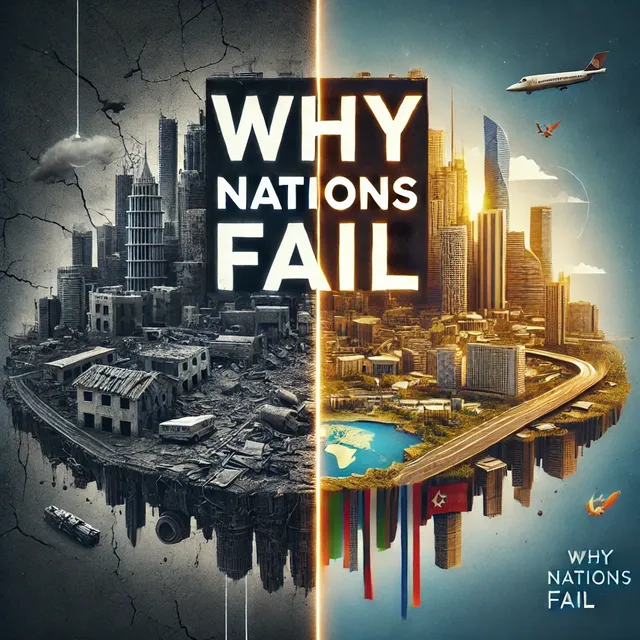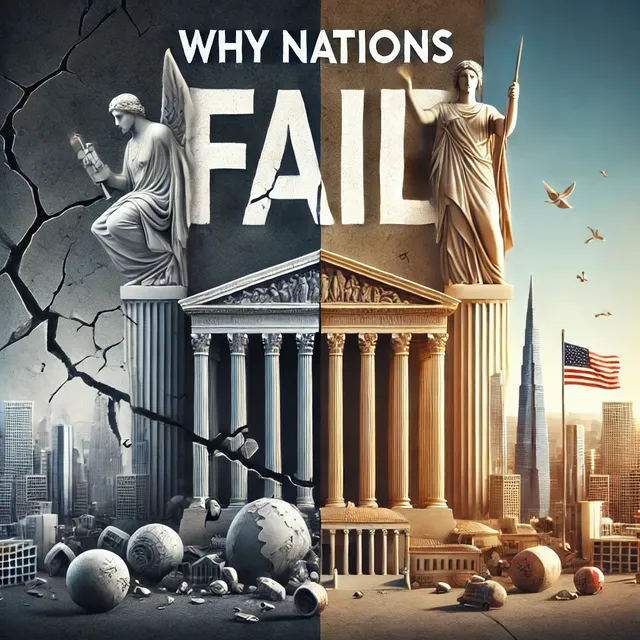# **3 Reasons Why Nations Fail – Lessons from the Book *Why Nations Fail***

Why do some nations prosper while others remain trapped in poverty and instability? In Why Nations Fail by Daron Acemoglu and James A. Robinson, the authors argue that political and economic institutions determine the success or failure of a nation. Their research debunks geographical, cultural, and ignorance-based theories, proving that institutions shape a nation's destiny.
Here are three key reasons why nations fail, with real-world examples illustrating their impact.
1. Extractive Political Institutions
Definition: Extractive political institutions are systems where power is concentrated in the hands of a few elites who manipulate the system for their own benefit, suppressing opposition and limiting broader participation in governance.
Example – North Korea vs. South Korea:
North and South Korea provide a striking example of how political institutions determine national success. After World War II, the Korean Peninsula was divided. South Korea adopted democratic institutions, promoting inclusive governance, property rights, and economic competition. Meanwhile, North Korea remained under an authoritarian regime with centralized control over resources. As a result, South Korea flourished into a global economic power, while North Korea stagnated with widespread poverty and oppression.
Conclusion: Nations fail when their political systems serve only a privileged few instead of fostering broad-based participation and innovation.

2. Extractive Economic Institutions
Definition: Extractive economic institutions are systems where wealth and opportunities are controlled by elites, limiting economic mobility and discouraging entrepreneurship and innovation.
Example – Colonial Latin America:
During the Spanish and Portuguese colonial rule in Latin America, extractive economic policies favored the ruling elites while exploiting the indigenous population. The encomienda system forced native workers into labor under harsh conditions, preventing wealth distribution. These extractive institutions persisted even after independence, leading to continued economic disparity and weak industrialization compared to countries with inclusive economic institutions, such as the United States.
Conclusion: Nations fail when their economic systems restrict opportunities, preventing ordinary citizens from participating in wealth creation and innovation.
3. The Lack of Creative Destruction
Definition: Creative destruction is the process where old economic structures are replaced by new, innovative ones. When elites block this process to maintain their power, economic and technological progress stalls.
Example – The Ottoman Empire's Resistance to Innovation:
The Ottoman Empire, once a dominant global power, declined in part due to its resistance to technological and economic advancements. Unlike Europe, which embraced the printing press and industrialization, the Ottoman rulers feared these innovations would undermine their control. The empire restricted printing presses for centuries, keeping knowledge and new ideas out of reach. As a result, it fell behind European nations, which thrived by embracing technological progress.
Conclusion: Nations fail when they resist innovation, fearing it will disrupt the existing power structures, ultimately leading to economic stagnation.
Final Thoughts
Why Nations Fail presents a compelling argument that institutions, not geography or culture, determine a nation's fate. Extractive political and economic systems, along with resistance to innovation, are the main reasons why countries fail to achieve sustainable development. The examples of North Korea, colonial Latin America, and the Ottoman Empire demonstrate the devastating effects of such institutions.
For a nation to succeed, it must adopt inclusive institutions that encourage participation, innovation, and fair economic competition. Only by fostering such systems can a country achieve long-term growth and prosperity.
